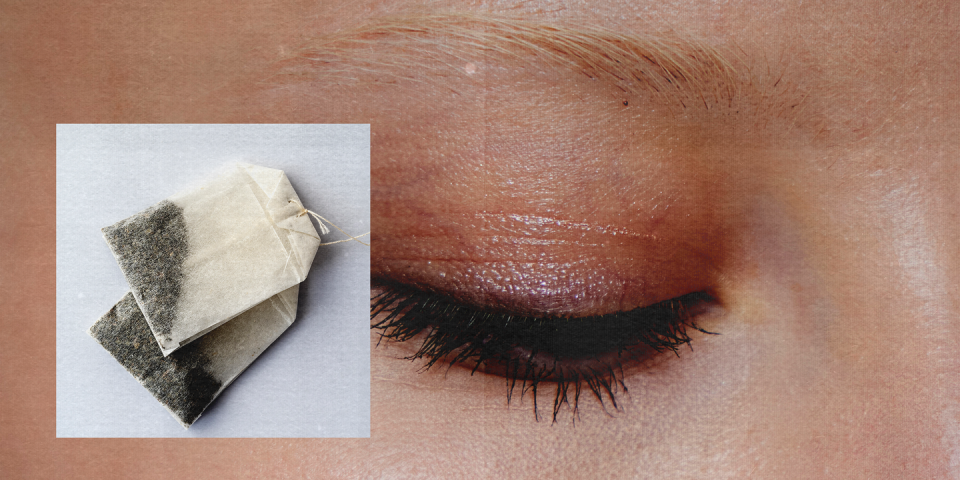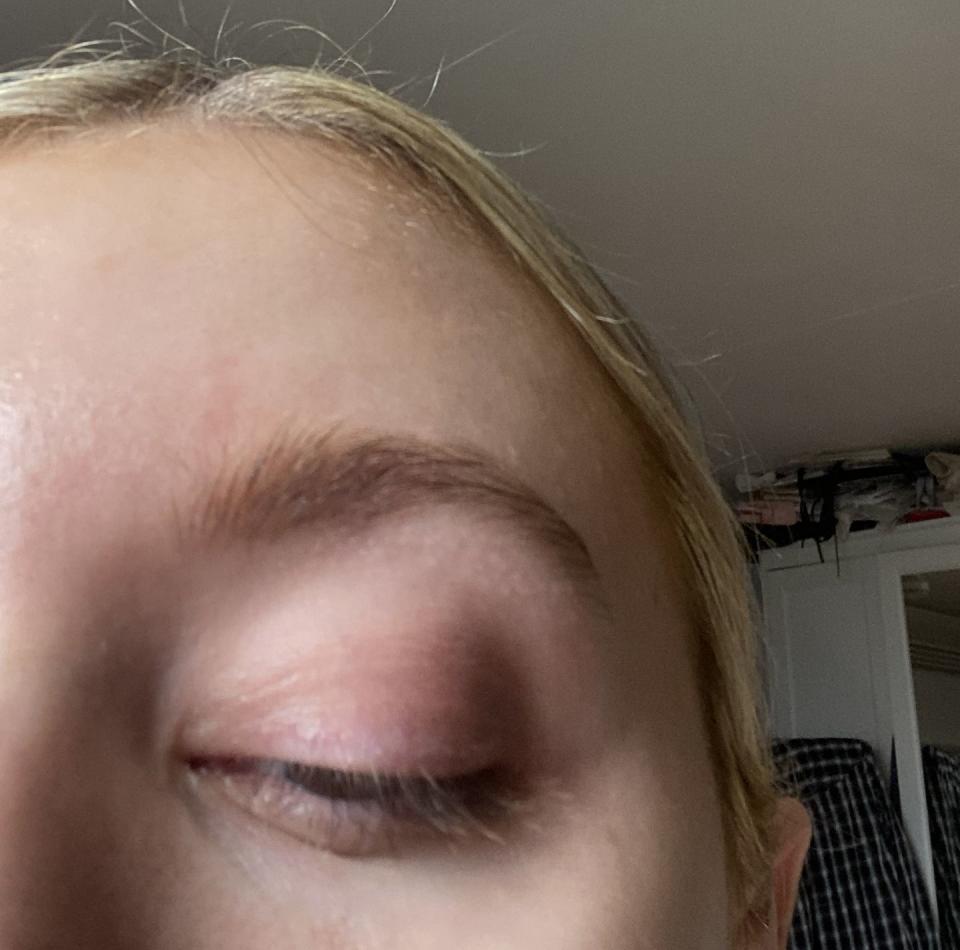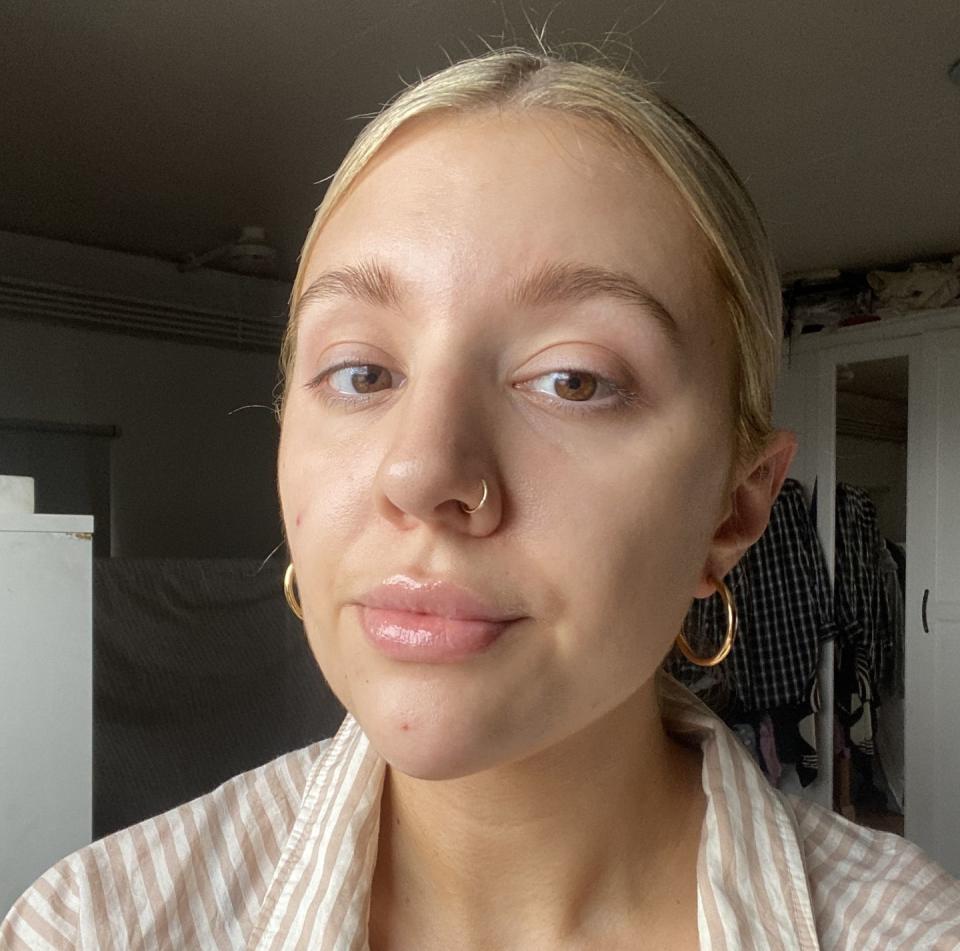This unlikely beauty hack saved me from eyelid eczema

You’ll often hear the same beauty tips and tricks from the rich and famous: taking your makeup off every night before bed, wearing SPF daily without fail, and drinking lots and lots of water. But my answer, if I was switching seats from beauty editor to celeb is, well, a little more niche: a couple of PG Tips.
From as young as I can remember, my Mum has always championed the method of using cold tea bags on sore or itchy eyes, and it’s something I’ve carried with me into my thirties. I suffer from terrible hayfever every June and July, and all the fancy, expensive lotions and potions fail to sort me out like a pair of tea bags do. Whenever I feel like the only thing that’d soothe me would be to rip my own eyeballs out and dunk them into a cool glass of water, cold tea bags do the trick like nothing else.
This summer, I unfortunately experienced a double whammy: hayfever eyes and an unexpected (and very unwelcome) bout of eyelid eczema. A visit to my dermatologist confirmed it was probably caused by a reaction to a new product (of which I try many in my job), and that I was likely prone to eczema as a hayfever and asthma sufferer (the three are linked).

I was recommended a stripped-back routine and a number of eye creams with simple ingredient lists, some of which did make a big difference. But the biggest difference? Well, that accolade goes to the humble tea bag pack in my cupboard.
Now, let me clarify that I am not suggesting tea bags can resolve or fix eyelid eczema. My eczema – which is characterised by dry, itchy patches of redness on and around my eyes – benefitted most in the long run by avoiding any active ingredients in my skincare routine and applying certain remedies (more on this later). Still, I will argue that tea bags are the only things that would soothe a flare-up in the moment, quickly and effectively. After use, my eyes are always visibly less red and sore, and itching has subsided.
Using the ‘tea bag method’ couldn’t be simpler – and in these expensive times (cost of living crisis, I’m lookin’ at you), it couldn’t be more affordable. Any tea bag will do, but I find good old English breakfast tea does it best, particularly brands like Tetley who do rounded bags that fit the eyes perfectly.
All you need to do is prepare a cup of tea as you normally would, but instead of using one bag, pop two in a cup of boiling water to brew. After about 30 seconds, remove them from the boiling water and pop them in the freezer for 20 minutes or so, or in the fridge if you have a little more time. Once they’re ready, lie back and put them on your eyes for a few minutes – I’ve made a habit of throwing them on each morning as I listen to a song (usually Taylor Swift) that’s around 3-4 minutes long.

Now, little direct research has been done in terms of the benefits of tea bags and eye conditions, but certain studies have found that tea can have healing properties. Traditionally, too, any cold compress on the eye area has been said to tackle inflammation, dark circles and even minor eye injuries. Tea bags are the perfect-sized cold compress for the eyes, making them an obvious choice.
Many teas also have antioxidants and caffeine in them, which naturally can also help to soothe redness and inflamed eyes. "Using the tea bag method is an undeniable ancient remedy," says Jennifer Rock, CEO + Founder of Skingredients and The Skin Nerd. "Typically, it’s the caffeine constriction of vessels, alongside the anti-inflammatory aspect of herbal tea leaves, that lend themselves to topical application – and therefore have a positive impact on puffy, swollen, fatigued eyes."
And if you really want to utilise the antioxidants in tea bags as much as possible, skin expert Dr Kemi Fabusiwa recommends trying chamomile or green teas, which "are well known in the skincare industry for their soothing, anti-inflammatory properties."
Dr Fabusiwa adds, however, that "you should use this hack alongside tried-and-trusted remedies that have a strong evidence base behind them; for instance, using well-known emollients and putting these in the fridge."
Rock agrees this is a temporary solution for short-term relief, but it can be combined with product and other approaches: "As a believer in data and science, I do suggest opting for medical assistance for skin concerns such as eczema flare-ups and of course for infections."
"My main tip for eczema is to wash with soap-free cleansers, as this will reduce the irritation and heat," she continues. "Emollients are also key; simple formulas that lock in the natural moisture levels of skin are paramount. Avene is a staple brand, or the Skingredients Good Fats product."
I’d also recommend the La Roche Posay Toleriane Ultra Eye Cream or the CeraVe Eye Repair Cream; both of which are super simple, stripped-back eye creams that’ll hydrate without causing additional irritation.
Dr Fabusiwa adds that staying away from triggers like dry weather and irritating ingredients and avoiding scratching wherever possible, is key.
From my experience, it is best to take a two-pronged approach to dealing with eyelid eczema; while trialling hacks such as this can be a game-changer, you’re also safest to combine this with gentle skincare and eye creams to boot.
And if your eczema persists or you need further advice, "do seek medical attention, especially if cracking, bleeding or infection is present," says Rock, with Dr Fabusiwa adding you may be prescribed a short-term dose of topical steroids while at your doctors.
You Might Also Like
